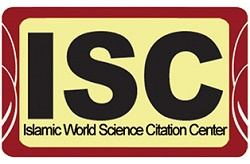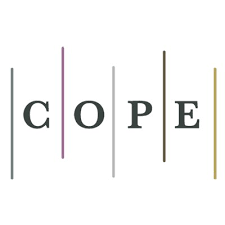Human Resource Productivity and Work - Life Balance in Learning Organizations
DOI:
https://doi.org/10.52547/ijimes.1.3.32DOR:
https://dorl.net/dor/20.1001.1.27832678.2021.1.3.3.7Keywords:
human resource productivity, work – life balance, learning organizationAbstract
Purpose: The purpose of this paper is to present main concepts and ideas about Work - Life Balance and Human Resource Productivity in organizational learning. Employee productivity is an assessment of the efficiency of a worker or group of workers. On the other hands, there is a positive relationship between Work life Balance & productivity. Promote work-life flexibility options for all staff.
Methodology: The technique used is a comparative studies approach. Comparative research methods have long been used in cross-cultural studies to identify, analyze and explain similarities and differences across societies. This technique often utilizes multiple disciplines in one study. The study period is 2020-2021.
Findings: The results show that Fundamental Initiatives for Creating Work-life Balance is Change the Organizational Culture, Clarity of Vision, Purpose and Objectives, Training, Workshops or Development Programmers, Job sharing, Part-Time Work, Flexi time, Working Condition and etc., …
Originality/Value: Having a Healthy Work-Life Balance Improves Productivity in Organizations.
Downloads
References
Noori, F., Garachorlo, N., Samadzad, S. and Ghahremani Nahr, J. (2019), Comparative Study of Factors Affecting Human Resources Productivity in Scientific and Technological Organizations of Selected Countries and Component Evaluation in Academic Center for Education, Culture and Research, Journal of Human Resource Study, 9(1), 71-92.
Samadzad, S. and Hashemi, M.A. (2021), Work - Life Balance and Productivity in Learning Organizations (LOs), Rah publications, Tehran.
Mokaya, S. O., Musau, J. L., Wagoki, J., & Karanja, K. (2013). Effects of organizational work conditions on employee job satisfaction in the hotel industry in Kenya. International Journal of Arts and Commerce, 2(2), 79-90.
Gayathiri, R., Ramakrishnan, L., Babatunde, S. A., Banerjee, A., & Islam, M. Z. (2013). Quality of work life–Linkage with job satisfaction and performance. International Journal of Business and Management Invention, 2(1), 1-8.
Bathaee, Mehrnaz. "Optimization of manpower allocation by considering customer relationship management criteria and uncertainty conditions in car dealerships." International Journal of Innovation in Management, Economics and Social Sciences 1, no. 2 (2021): 12-27. https://doi.org/10.52547/ijimes.1.2.12
Ghahremani Nahr, J., & Bathaee, M. (2021). Design of a humanitarian logistics network considering the purchase contract. Journal of Decisions and Operations Research, 6(3), 423-444.
Kazemi, K., Amini, M., & Babaeifard, A. (2020). Evaluation of Learning Organization Components at Kabul University from the Viewpoint of Faculty Members and Students. Iranian Journal of Comparative Education, 3(1), 595-608.
Meenakshi, S. P., Subrahmanyam, V., & Ravichandran, K. (2013). The importance of work-life-balance. IOSR Journal of Business and Management, 14(3), 31-35.
Chan, X. W., Kalliath, T., Brough, P., Siu, O. L., O’Driscoll, M. P., & Timms, C. (2016). Work–family enrichment and satisfaction: The mediating role of self-efficacy and work–life balance. The International Journal of Human Resource Management, 27(15), 1755-1776. https://doi.org/10.1080/09585192.2015.1075574
Nahr, J. G., Nozari, H., & Sadeghi, M. E. (2021). Green supply chain based on artificial intelligence of things (AIoT). International Journal of Innovation in Management, Economics and Social Sciences, 1(2), 56-63. https://doi.org/10.52547/ijimes.1.2.56
Abramo, G., & D’Angelo, C. A. (2014). How do you define and measure research productivity?. Scientometrics, 101(2), 1129-1144.
Yadav, S., & Agarwal, V. (2016). Benefits and barriers of learning organization and its five discipline. IOSR Journal of Business and Management, 18(12), 18-24.
Fapohunda, T. M. (2014). An exploration of the effects of work life balance on productivity. Journal of Human Resources Management and Labor Studies, 2(2), 71-89.
Foo, C. C., Cheung, B., & Chu, K. M. (2021). A comparative study regarding distance learning and the conventional face-to-face approach conducted problem-based learning tutorial during the COVID-19 pandemic. BMC medical education, 21(1), 1-6. https://doi.org/10.1186/s12909-021-02575-1
Cognizant Annual Report, 2020
Rizal, M., & Sholehuddin, S. (2019). Factors Affecting Labor Productivity of Small Manufacturing Industry. Jurnal Manajemen dan Kewirausahaan, 7(1), 47-52.
McGraw-Hill Annual Report, 2019
Published
How to Cite
Issue
Section
License
Copyright (c) 2021 Saeideh Samadzad, Mirabbas Hashemi

This work is licensed under a Creative Commons Attribution 4.0 International License.












